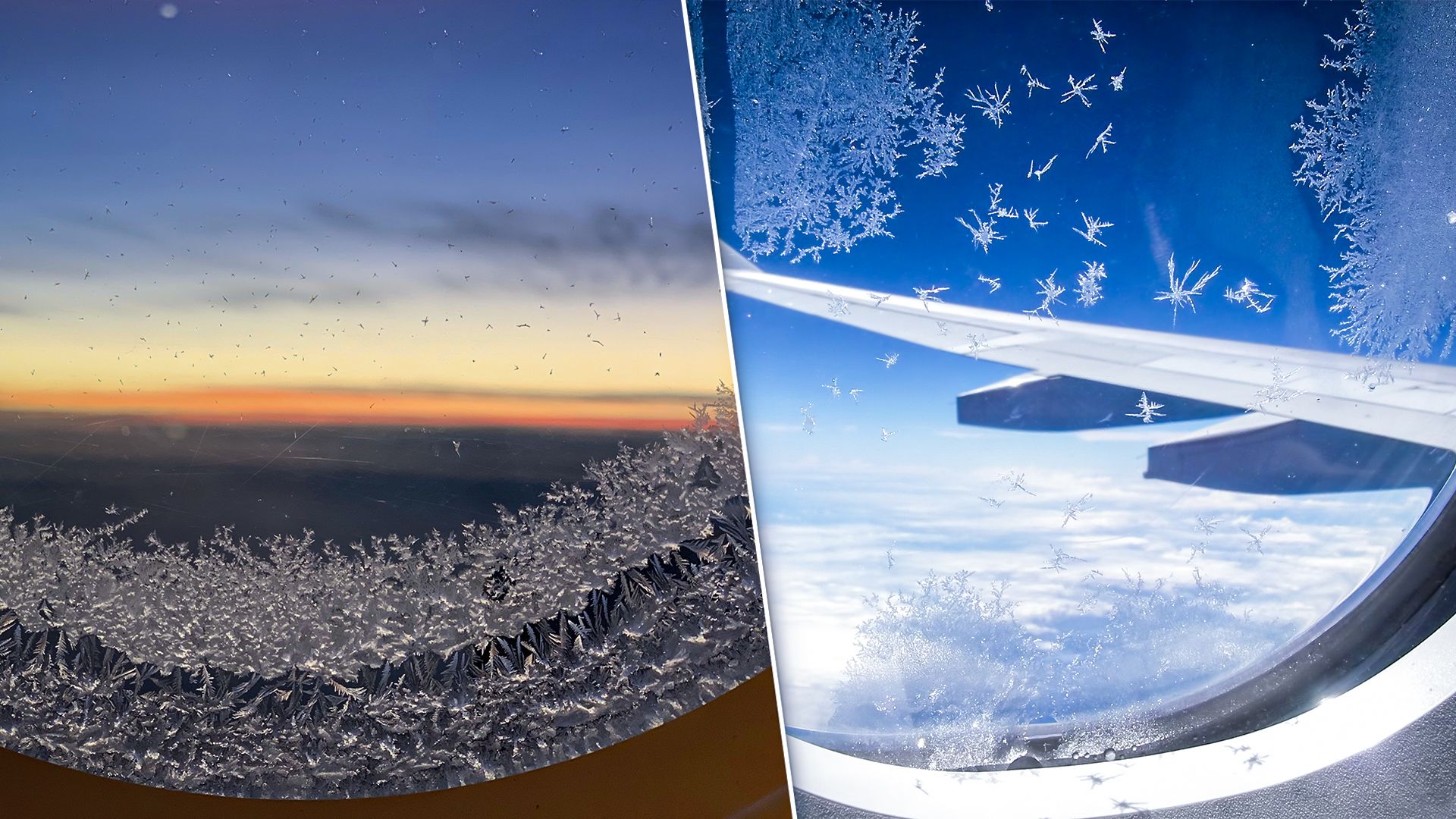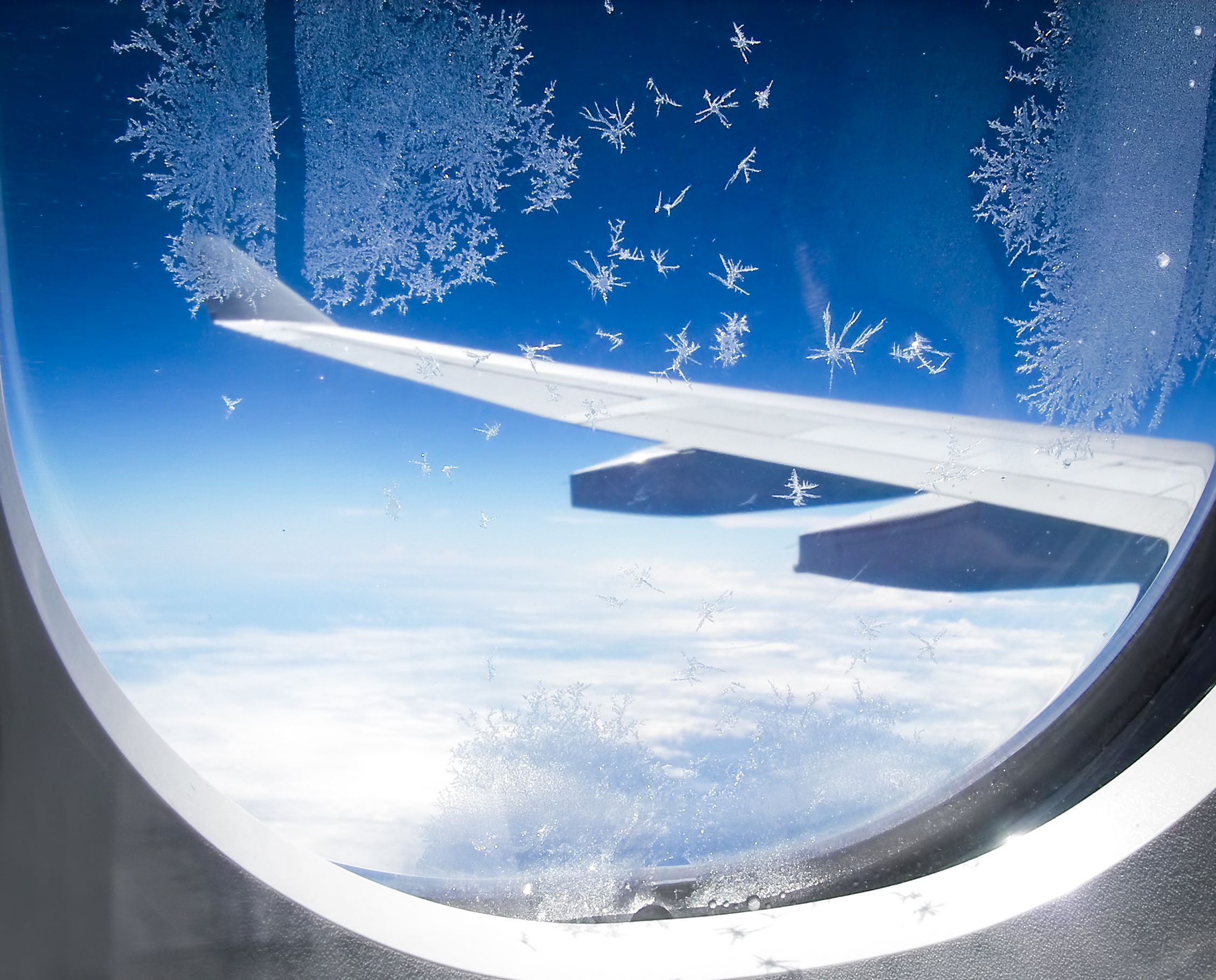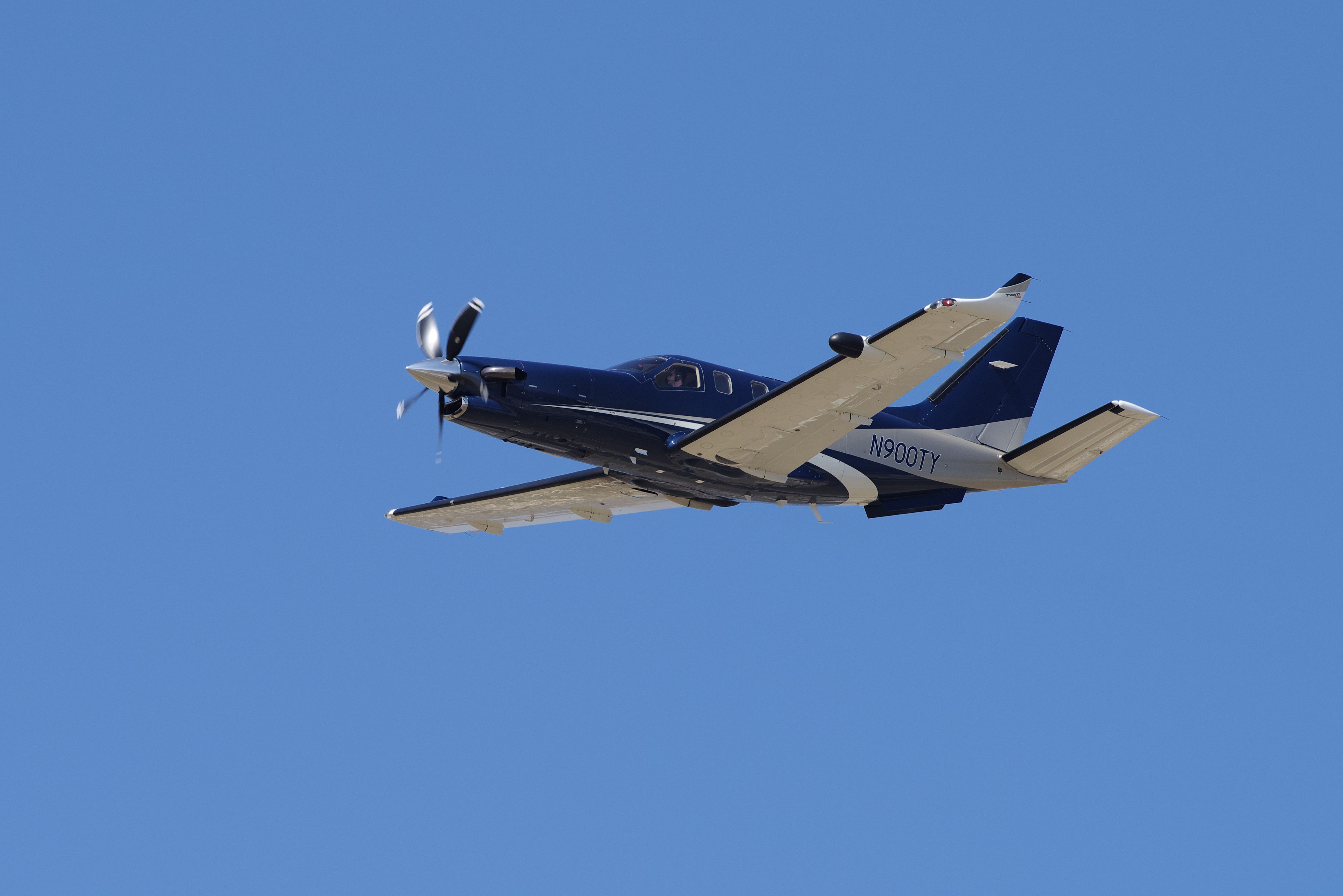Summary
- Ice crystals form on aircraft windows due to cold temperatures at high altitudes, allowing the stuck water vapor to freeze.
- Breathing holes in windows help manage moisture and may attract ice crystals.
- Ice crystals on GA aircraft windows can pose safety risks including visibility issues.
Ice crystals forming on aircraft windows are a common occurrence during flight, often capturing the attention of passengers. However, beyond their visual presence, understanding the science behind these formations is essential. In this guide, we will take a closer look at how ice crystals form on aircraft windows and whether these are a cause of concern.
How do ice crystals form on aircraft windows?
In simple terms, ice crystals can develop on aircraft windows because of the specific temperature, altitude, and pressure conditions that are common when flying at high altitudes.
Photo: Klemen K. Misic | Shutterstock
Aircraft typically cruise at altitudes between 30,000 and 42,000 feet (9 and 12 km), where temperatures can drop to -40°C or lower. The air is extremely cold at these altitudes, and water vapor can turn into ice crystals if particles like dust are present.
It is worth noting that these ice crystals are most likely forming between the windowpanes. Airplane windows typically have three layers of acrylic, creating conditions between the panes that support the formation of both droplets and ice due to the temperature and pressure.
Breathing holes in aircraft windows
Aircraft windows have small breathing holes that serve an important function related to the window’s layered design. Aircraft windows are made of three layers of panes. The innermost layer is covered with a plastic shield to protect the glass, the breathing hole is located in the middle layer, and the outermost layer is exposed to harsh external conditions.
Ice crystals also tend to form near these breathing holes when the aircraft is flying at cruising altitudes. According to a report by the Universities Space Research Association, the breathing hole helps prevent the buildup of moisture between the window’s different layers.
In addition, if ice crystals form, they tend to arrange themselves in a circular pattern around the small hole. Below, find a gallery showcasing ice crystals forming in a circular pattern near the breathing hole.
Are ice crystals a cause of concern?
Typically, ice crystals on commercial aircraft windows do not raise safety concerns but can be inconvenient for passengers who want to enjoy the view, as the droplets hinder their sightseeing experience.
However, there are specific situations where ice crystals can pose safety issues, particularly for general aviation (GA) aircraft. General aviation planes typically take considerable precautions to ensure they are free of ice or frost before takeoff due to the significant dangers it poses.
Ice presents four main threats to aircraft:
- Loss of lift, as even a thin layer of frost on the wings, can significantly impair their ability to generate lift.
- The added weight of ice, particularly clear ice, can be substantial enough to prevent an aircraft from maintaining altitude.
- Ice accumulation on the cockpit window can obstruct the pilot’s view through the windshield, compromising visibility and safety.
- Ice buildup on an aircraft’s propellers can cause balance issues; if only part of the ice is dislodged during flight, the propeller can be unbalanced, which poses a severe risk to the aircraft’s stability and safety.
Some GA aircraft are certified for Flight Into Known Icing (FIKI). These aircraft, including jets, turboprops, and higher-end piston aircraft, usually come equipped with various anti-ice features. These may include heated or pneumatic boot wing leading edge covers or anti-ice weeping wing systems, heated leading edges on the propellers, and heated windscreens. In some cases, there’s at least one heated plate in front of the pilot’s view.
General aviation aircraft with FIKI certification are permitted to enter regions with known icing, whereas those without it usually steer clear or swiftly exit any icing conditions. However, even FIKI-certified aircraft, when flying in potentially icy conditions where ice buildup is occurring or likely, are ready to retreat from the danger zone if the rate of ice accumulation surpasses the capability of their anti-ice systems to counteract it.
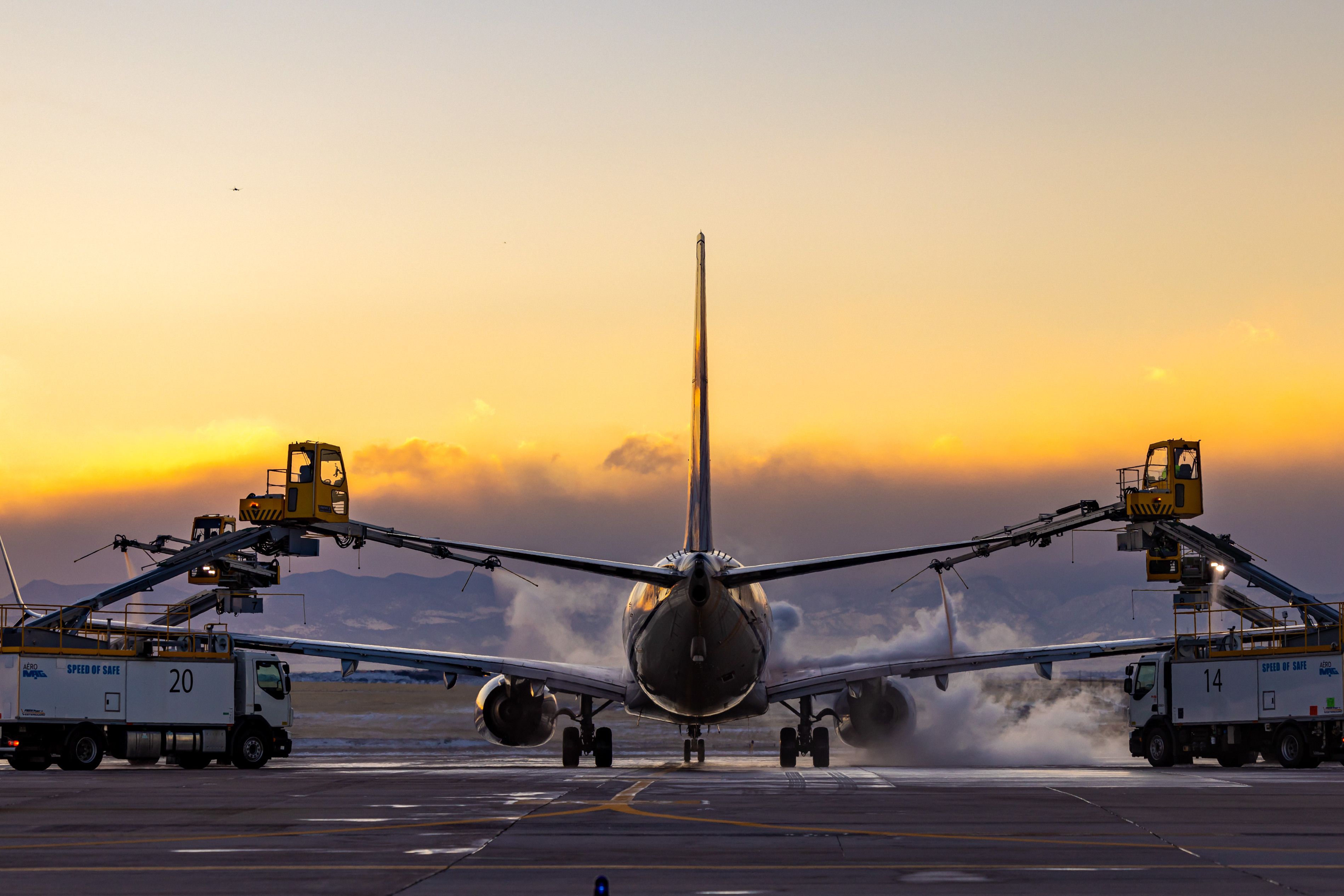
Related
How Does Aircraft De-Icing Work?
The process is crucial to aircraft performance and often necessary for takeoff.
The crash of the Socata TBM-700 plane
In 2014, a Socata TBM-700 plane, with three occupants, including the pilot, crashed off the coast of Jamaica. As reported by Forbes, the pilot was allegedly unresponsive. F-15 jet fighters were dispatched to monitor the aircraft when it stopped responding. Reports from the fighter pilots indicated that the windows of the aircraft were frosted.
Photo: Angel DiBilio | Shutterstock
Frosted windows could signal a pressurization issue as moisture inside the aircraft may freeze. The pressurization system also regulates cabin air temperature. At 25,000 feet, a loss of pressurization would cause the cabin temperature to drop rapidly. Without a quick descent to below 10,000 feet, passengers risk hypoxia. This is what the US Federal Aviation Administration has to say about hypoxia:
“Hypoxia is just one of the physiological problems that can impair pilots if they are not aware of the effects of decreased oxygen pressure at altitude. Hypoxia, by definition, is the lack of sufficient oxygen in the blood, tissues, and/or cells to maintain normal physiological function.”
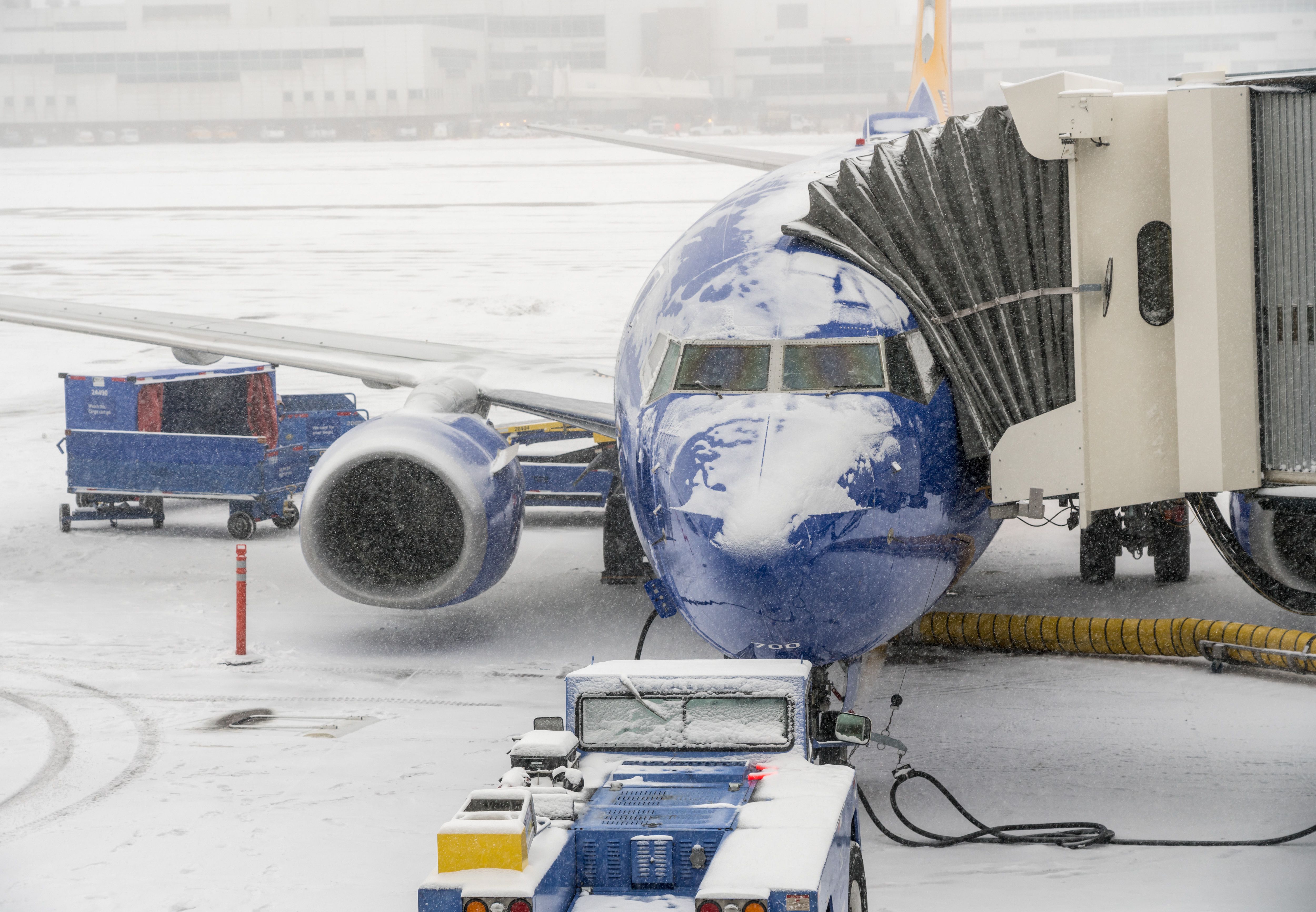
Related
What Are The Risks Of Engine Icing On Commercial Aircraft?
Ice contamination can severely affect engine performance.
What are your thoughts on this? Have you ever noticed ice crystals on your aircraft window? Feel free to share your experiences in the comments section below.

